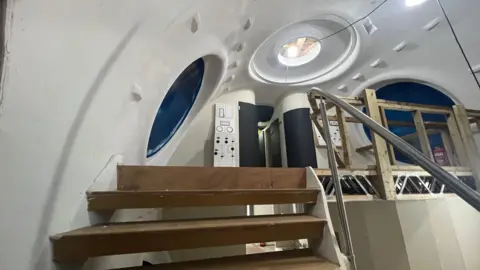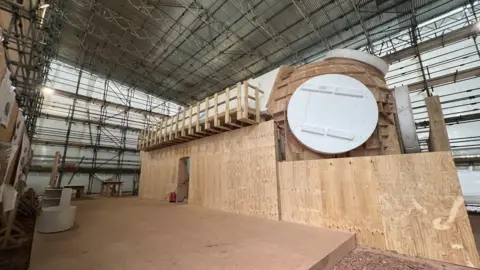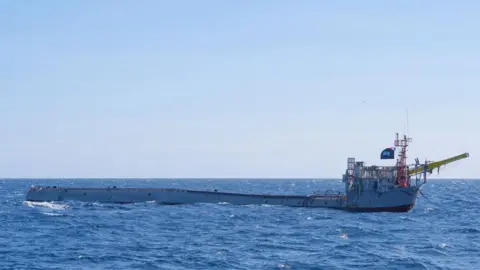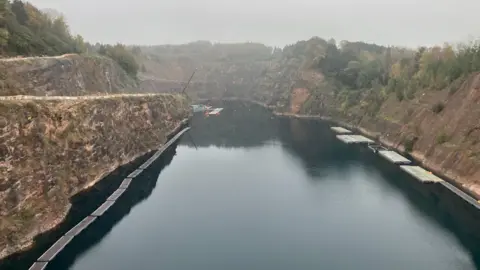Test run planned for 3D-printed under water space
 BBC
BBCA company based at an old diving centre is using 3D printing to create a space they think humans could live in - 200m (656ft) below the surface of the water.
The aim is to have human habitation on the continental shelf by 2027, to develop our understanding of the oceans.
The firm, called Deep, is testing their designs in the Forest of Dean, Gloucestershire, and hope to put their first prototype into the water in 2025.
The quarry at Tidenham has a depth of 80m (262ft) and will work as a testing ground for the company.

 DEEP
DEEPSentinel has been designed to be lived in by six crew people for approximately 28 days.
In Avonmouth, on the outskirts of Bristol, the company is 3D printing the underwater habitation which will go into the forest dive centre.
That will be stress tested before going into the ocean.
“The key challenge here is the hostile environment that we have to deal with,” said Jake Mann, a senior mechanical engineer for Deep, who wants to make sure those at the bottom of the ocean "have a comfortable environment to live and work in".
Deep is in discussion with governments and private companies all over the world about the way these pods could be used beyond research.

Deep is looking at having data centres at the bottom of the ocean as it would be an efficient way keeping them cool with limited concern around space.
"We know data centres are resource hungry, they love land and they love power. It's estimated they are going to consume 10% of global electricity production over the next decade, each year." Deep President Sean Wolpert said,
"Most of that power consumption goes to keeping those things cool. Well what is a very effective resource in taking that heat and dissipating it? The ocean."
 DEEP
DEEPThe firm has also recently bought a ship, called Flip, that can float both vertically and horizontally.
Flip will help further Deep’s ocean research capabilities, along with the project of human habitation on the continental shelf. When Flip is inverted its hull can reach a depth around 100m (328ft).
"You can do sonar mapping and so forth to get a better picture of our seabed." Mr Wolpert said.
Flip is currently in dry dock in France being repurposed for Deep.

The old quarry has a depth of 80m, 120 less then Deep's aim of having humans living at 200.
But Tidenham is a static environment which makes it easier to test the habitats in, as opposed to the sea.
Deep hopes that enough governments and organisations will be interested to have a permanent underwater presence by 2027.
